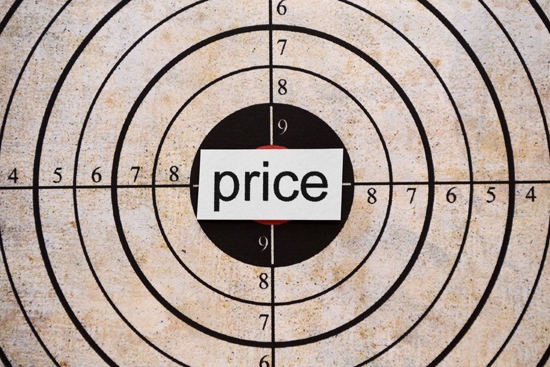Nowadays, price is one of the most important elements of any product, as a result of which, building marketing strategy of a particular company, a specialist must take into account all existing pricing factors.
However, many people who are not professionally involved in this field, but who cannot hire a qualified specialist, must correctly understand what these factors are. In other words, you need to know how much the price affects the work of the company, what pricing factors exist, and how the value of a product is formed correctly.
Price - what is it?

There are at least four points of view on the question posed above, depending on which particular specialist voices them:
- Economist - the interaction of two market forces, such as supply and demand.
- Accountant - The price should cover financial costs that have been allocated for the manufacture of a product, as well as provide a profit for the company.
- Consumer - an indicator of the value of a product.
- Seller - the opportunity to gain a competitive advantage over similar institutions.
Pricing factors affect not only various commercial organizations, but in addition to this, they are also used by non-profit companies, such as commercial and industrial associations, charitable foundations, and a number of other structures. For example, in the process of pricing by charitable foundations, a variety of target levels of donations can be set, as a result of which patrons will be offered a variety of statuses or conditions depending on the exact amount they were willing to donate to this fund.
Factors

Pricing is a rather time-consuming procedure, because in order to establish a truly correct and at the same time competitive cost of a product, you need to consider a variety of pricing factors, such as:
- The cost of the product. The amount of permanent or variable costs which the company will bear in the process of production of each unit of production The costs of manufacturing a product or providing a particular service are the most important pricing factors, because if the selling price is lower than the cost of a product, the company will ultimately suffer losses.
- Marketing. The price should be as appropriate as possible to the target market, consumer, as well as distribution channels through which the sale of goods will be carried out.
- Positioning. Cost will allow you to form the correct image of a particular product or service, ranking it in the economy segment, mass market or luxury.
- Product life cycle. At different stages of the life cycle, a different approach to the strategy of value formation should be used, because there are different goals.
- Competition. The cost of goods should be selected in accordance with the competitive price environment, as well as price clusters that have formed in the current market.
- Prediction of competitors. It is necessary to correctly predict the consequences that these or other decisions in the field of pricing can lead to. For example, if you set the price too low, then a price war may start, which is unlikely to be interesting for any of the parties.
- Perception of prices by consumers. A competitive price is built on the basis of consumer perception, since too cheap a product may seem to buyers to be simply poor quality, while an overpriced price can scare off a potential consumer.
- The state of the economy. As long as the economic crisis is in effect, goods that are in the economy segment are becoming more popular, while at the same time, buyers' sensitivity to the cost of production is increasing.
- Legal regulations. From a legal point of view, in the country where the products are sold, there may be certain laws that limit price discrimination or may set the maximum possible cost threshold for a certain category of products.
How is the price formed?

The correct pricing mechanism is approximately as follows:
- The objectives of this procedure are determined.
- The cost of production is calculated, and the costs of a possible increase in production are projected.
- The point at which the company operates without loss is determined.
- Estimated demand for a particular product from the target audience.
- The elasticity of demand is estimated, and the relationship between profit, costs and demand for the goods is also determined.
- It evaluates how the value of the product is perceived in the target market.
- The prices of similar products that are set by competitors are analyzed.
- Determines the price positioning regarding competitors.
- A clear pricing strategy as well as tactical measures are approved.
- The final price is set.
Determined for the purpose
The goals that the pricing mechanism will pursue are divided into two categories:
- Marketing.
- Financial.
Financial goals include sales and profit targets, while marketing ones consider the basic needs of the company regarding how the product is located in the industry and how the image of this product is perceived.
The financial goals pursued by the pricing process are formed in terms of the maximum possible maximization of profit, income, as well as expansion of sales. In addition, financial goals include achieving a certain level of sales and profits, as well as one or another level of profitability of the product being sold.
If we are talking about marketing goals pursued by the pricing process, then we can say that they represent a continuation of the strategy of positioning and subsequent promotion of the product, and are also defined in terms of maintaining or even increasing market share. They also consider interaction with competitors, help to build a certain price positioning or reach the level of test purchases and attract a certain percentage of the target audience to the goods offered by this company.
What are the pricing decisions?
Considering the existing types of pricing, a marketing specialist will have to make three important decisions:
- Identify pricing technology.
- Choose a pricing strategy.
- Establish a pricing policy in terms of tactical pricing measures.

The pricing strategy defines the principles of long-term management of the value of the product, while it is worth noting that this strategy should not be contrary to the marketing strategy of the product, as well as determine price positioning in relation to competitors. In addition, this determines pricing strategies in sales channels, as well as the need for price discrimination. Types of pricing determine the technology for calculating the cost of production, taking into account existing costs, as well as the scale of production. The definition of tactical price measures concerns issues already pricing policy in relation to all kinds of stocks associated with a temporary reduction in value through individual sales channels, the introduction of discounts or package pricing terms.
Features of pricing in the global market
Price and pricing for world market differ in a number of features and provide for the most detailed study of all the factors that in one way or another affect the formation of the value of products, both general and exclusively applied. In particular, the amount chosen will determine how much the producers will be able to reimburse after selling the product, and which is not, what level of profit and income can be provided, and where resources will subsequently be directed. Among other things, price and pricing make it possible to determine whether there will be incentives for the subsequent expansion of the company's foreign economic activity.
In a constantly changing market economy, pricing in foreign trade, just like in the domestic market, is carried out under the influence of a specific market situation. In principle, the concept of price is similar for both the characteristics of the external market and the characteristics of the internal. Pricing strategies include a lot of factors and should be selected in accordance with certain market conditions, as well as careful forecasts for the future.
Price, including in international trade, is a certain amount of funds that the seller is going to receive by offering a certain service or marketable product. The coincidence of these requirements depends on a number of conditions, which are the factors of the pricing strategy, while they can be distributed among themselves according to their level and scope or nature.
How to determine the cost?

As mentioned above, the cost is determined in accordance with the conditions of competition, as well as the ratio and condition of supply and demand in the current market. However, in fact, when considering the international environment, pricing in a market environment becomes somewhat different. Thus, five more additional groups of pricing factors need to be considered.
Supply and demand
As you know, the ratio of supply and demand in the world market is felt by the subjects of foreign trade much more sharply in comparison with how this ratio is felt by suppliers in the domestic market. Indeed, in this case, you need to see the world market in front of you, and then continuously compare your own production costs not only with the value that pricing determined in the domestic market, but also compare it with world prices.
The manufacturer, that is, the seller of goods on the foreign market, is constantly in the mode of the so-called “price stress”, but at the same time, more consumers are present on the international market.
Mobility

Factors affecting pricing should also take into account the fact that production factors are less mobile in a global market. It is unlikely that anyone will be able to argue that the freedom of movement of capital, services, goods and labor in this case is much less than in the framework of a particular state. Indeed, in the first place, the factors affecting pricing take into account the fact that this movement is constrained by national borders, as well as relations in the foreign exchange sphere, which impedes the normal alignment of profit and costs for all these elements. Accordingly, all this must be taken into account when forming the price on the world market for your products.
What are world prices?
World prices are the cost of large export-import transactions, which are concluded on the commodity markets of various countries.The concept of "global commodity market" provides for a set of stable, repetitive transactions in the purchase and sale of certain services or marketable products that have international organizational forms or that are expressed in systematic export-import transactions by large consumers and suppliers. In current world trade, pricing features include primarily supply and demand, since the market price depends on them the most.
Consumers
If we talk about the practical impact on the value of the offered goods, then the solvent demand of consumers is taken into account, that is, in other words, whether the price audience has money for the purchase of a certain product. In this case, external pricing factors are taken into account, such as the quantity of goods that a consumer can buy, as well as the usefulness of this product and its consumer qualities.
Seller
The supply side also has its own pricing factors. First of all, pricing issues should consider how much of the product is offered by the company on the market, as well as what are the costs of production or circulation in the process of selling the product on the market. Among other things, the prices of resources or the means of production of the corresponding goods used are considered.
A common factor is the substitutability of the proposed product by some other, which will also fully satisfy the needs of customers. Among other things, the level of world prices is greatly influenced by the currency of payment, settlement conditions, as well as a certain number of additional conditions, including economic and non-economic ones.
Distortions

Often, specialists who regulate pricing encounter situations such as a distortion in the ratio of supply and demand. When there is an extremely high demand for a product, in which products manufactured at a national price in the worst conditions begin to be thrown into the market, it determines the world price for a certain time, and the price is quite high. In addition, it also happens that the supply significantly exceeds demand, as a result of which the bulk of sales falls on those subjects of trade in which there are better production conditions, but at the same time a lower price is set.
It is worth noting that the pricing policy includes a lot of interesting features. For example, if some of the largest producer in their country is the largest supplier of products, this does not mean that he can achieve the same success in the world market. In the predominant majority of cases, in the current world market, most of the goods are sold by countries that, from an economic point of view, can hardly be called powerful and large states.
Interacting with market prices, including also foreign trade, you need to correctly consider the difference in them and at the same time take into account the positions of individual parties, as well as the current market situation. First of all, there is such a thing as a seller’s price, at which the price is formed by the seller and is somewhat overstated, as well as the buyer’s price that he is willing to pay and which, accordingly, is lower.
In addition, it must be understood that, depending on the market situation, the seller’s market, where prices are entirely dictated by the seller due to the large amount of demand, as well as the buyer's market, where there is too much supply and the price situation is the opposite.However, such a market situation is constantly changing and affecting the price, as a result of which it becomes the main object of study and constant monitoring, since otherwise, in pricing, very serious mistakes can be made.








